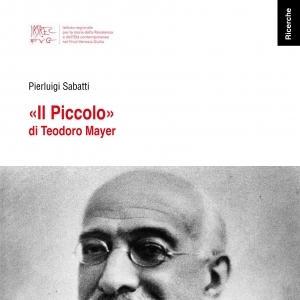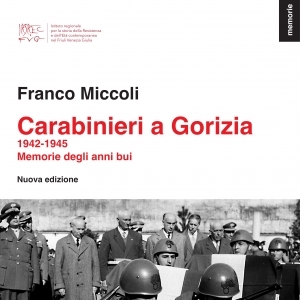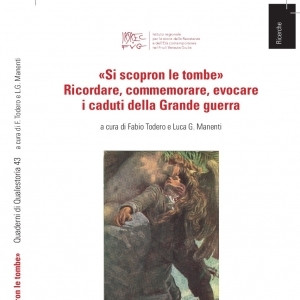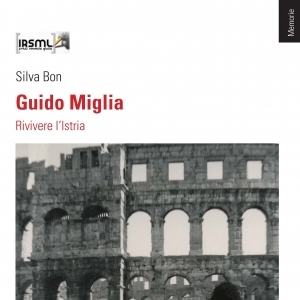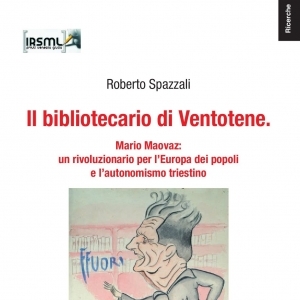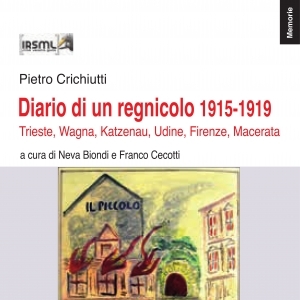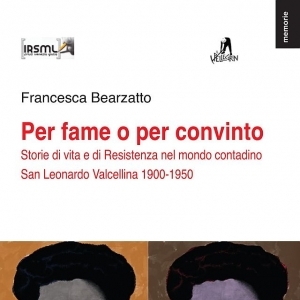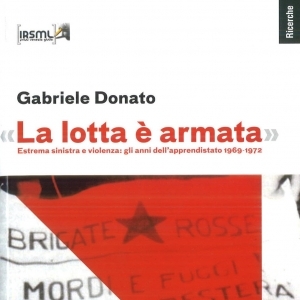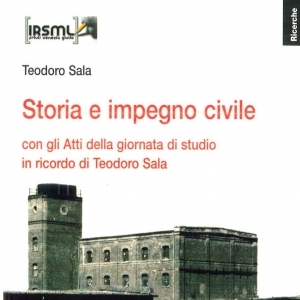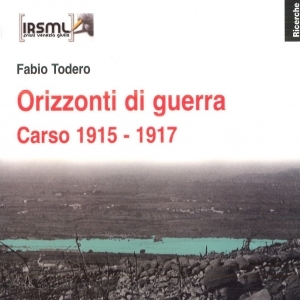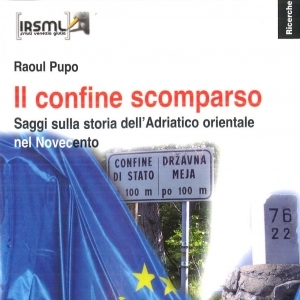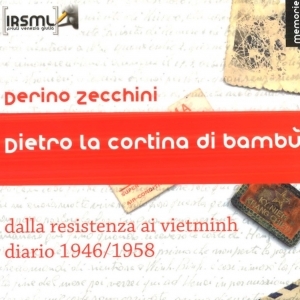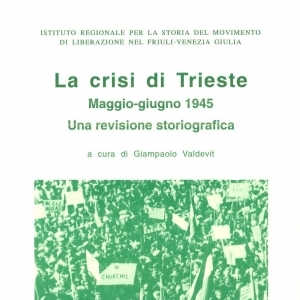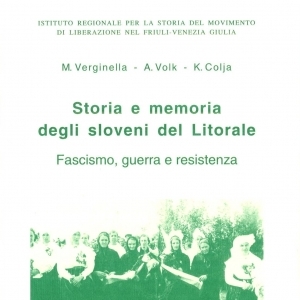Grande guerra e scuola
a cura di Annamaria Vinci

| Anna Maria Vinci | Introduzione | 5 |
| Studi e Ricerche | Studies and researches | |
| Adriano Andri | Le scuole medie triestine nella Prima guerra mondiale - Secondary schools in Trieste during the First world war | 9 |
| Vittorio Caporrella | Le associazioni degli insegnanti italiani a Trieste e l’identità linguistico-nazionale alla vigilia della Prima guerra mondiale - The italian teachers associations in Trieste: language and national identity before the World war I | 45 |
| Andrea Dessardo | Scuole al limite. L’istruzione primaria in lingua italiana in Alto Adige e nell’Istria interna, 1918-1922. Analisi d’una contraddizione - Border schools. Italian elementary education in South Tyrol and Inner Istria, 1918-1922. A comparative analysis | 75 |
| Documenti e problemi | Documents and problems | |
| Diana De Rosa | Lo scolaro e il maestro. La scuola nei rapporti dei dirigenti scolastici dal 1914-15 al 1918-19 –The pupil and the teacher. School in the reports of School managers from 1914-15 to 1918-19 | 99 |
| Adriano Andri | Quattro documenti in tema di scuola e Grande guerra a Trieste - Four reports about school and Great war in Trieste | 119 |
| Andrea Dessardo | Due documenti sulla scuola in Istria nel primo dopoguerra - Two reports about school in Istria in the first afterwar | 125 |
| Percorsi bibliografici | ||
| Angelo Gaudio | La scuola e la guerra. Appunti per una ricognizione storiografica - The School and the War. Notes for an historiographical recognition | 135 |
| Gli autori di questo numero | 143 | |
Gli autori di questo numero
Adriano Andri (Trieste 1956) collabora con l’Istituto regionale per la storia del movimento di liberazione nel Friuli-Venezia Giulia. Si occupa principalmente della storia delle istituzioni scolastiche in ambito locale. Ha pubblicato saggi sulle riviste «Qualestoria», «Materiali di lavoro», «Clio». È autore, insieme a Giulio Mellinato, dei volumi Scuola e confine. Le istituzioni educative della Venezia Giulia (Trieste 1994) e Scuola e guerra fredda. Le istituzioni educative a Trieste 1945-1954 (Trieste 2001); ha partecipato ad alcuni volumi collettivi, tra cui Friuli e Venezia Giulia. Storia del ’900 (Gorizia 1997), Trieste tra ricostruzione e ritorno all’Italia (1945-1954), a c. di A. Verrocchio (Trieste 2004), Le carte dei Weiss. Una famiglia tra ebraismo e impegno politico (Trieste 2007) e Petrarca 1912-2012. Un liceo classico nella storia di Trieste (Trieste 2012).
Vittorio Caporrella, è redattore presso il Dipartimento di Storia Culture Civiltà dell’Università di Bologna. Durante il dottorato di ricerca in Storia d’Europa (Università di Bologna - Freie Universität Berlin) ha svolto una ricerca sulle scuole medie triestine dal 1880 al 1914. Si occupa prevalentemente di storia del diritto di famiglia e storia dell’istruzione. Sullo stesso tema ha recentemente pubblicato:Scuola, diritto linguistico e identità nazionale: il caso del Ginnasio di Gorizia, 1910-1912, in Trento e Trieste, Percorsi degli italiani d’Austria dal ’48 all’annessione, a.c. di F. Rasera (Rovereto 2014).
Diana De Rosa ha svolto attività di ricerca nell’Università di Trieste. Studiosa di storia sociale e delle istituzioni educative, ha pubblicato numerosissimi volumi e saggi. Ricordiamo, tra gli altri, Il baule di Giovanna. Storie di abbandoni e infanticidi (Palermo 1995), Gocce di inchiostro: gli asili, scuole, ricreatori doposcuola della Lega nazionale, Sezione adriatica (Udine 2000) e i più recenti Diletta moglie, amati figli. Disposizioni e sentimenti nei testamenti della Trieste asburgica (Firenze 2010), e Pane, brodo e minestre. Cibo di poveri, ammalati, bambini, soldati, marinai e carcerati nella Trieste asburgica (Trieste 2013).
Andrea Dessardo è cultore della materia in Storia della pedagogia all’Università degli Studi di Udine e dottore di ricerca in Teorie, storia e metodi dell’educazione alla LUMSA di Roma. Ha pubblicato«Vita Nuova» 1945-1965. Trieste nelle pagine del settimanale diocesano (Trieste 2010).
Angelo Gaudio professore ordinario dell’Università di Udine, insegna Storia della pedagogia e Storia della scuola. È autore di numerosissime pubblicazioni in rivista, in volume e in opere collettanee. Ricordiamo, tra le altre, le monografie La politica scolastica dei cattolici: dai programmi all’azione di governo, 1943-1953 (Brescia 1991), Educazione e scuola nella Toscana dell’Ottocento (Brescia 2001) e la curatela del volume I. Illich. Un profeta postmoderno (Brescia 2012).
Anna Maria Vinci già docente presso l’Università di Trieste, è attualmente presidente dell’Istituto regionale per la storia del movimento di liberazione nel Friuli Venezia Giulia. I suoi studi si sono concentrati soprattutto sul fascismo nelle aree di confine. Su questi temi ha recentemente curato il volume Regime fascista, nazione e periferie, Atti del convegno omonimo (Udine 2010) e pubblicato il saggioSentinelle della patria: il fascismo al confine orientale 1918-1941 (Roma-Bari 2011). Ricordiamo inoltre, tra gli altri, il volume Storia dell’Università di Trieste: mito, progetti, realtà (Trieste 1997).
Abstracts
Abstract – Secondary schools in Trieste during the First world war Protected by the State or considered disloyal citizens?
Adriano Andri
On the eve of the First World War, Trieste is at the peak of its economic and social development. The national mosaic of the town population is reflected in the threefold educational system (German, Italian and Slovenian). Focusing on secondary schools, this article aims at offering a picture of everyday life in wartime Trieste, using sources such as school registers and yearbooks. The result is somewhat surprising: on the one hand, a deep divide seems to separate the schools of the three national communities, and Italian schools in particular see themselves as a stronghold of Italian culture and national identity; on the other hand, there is much in common in terms of programmes, educational methods and cultural background. After the outbreak of the war, control and repression by the Austrian authorities become stricter, but at the same time a massive assistance work begins, in which all the schools are involved, regardless of their nationality. Another major feature of the war years is the large number of secondary school pupils enrolled in the Austrian Army: their dramatic and often tragic experience will be totally forgotten in postwar years, after Trieste’s passage to Italy.
Key words: First World War, Trieste, secondary schools, school register and yearbooks.
Parole chiave: Prima guerra mondiale, Trieste, scuole medie, annuari e registri scolastici.
Abstract – The italian teachers associations in trieste: language and national identity before the World war I
Vittorio Caporrella
Language policy, schools and minority rights were essential elements of the political struggle in the Habsburg monarchy in the Early Twentieth Century. In the Austrian lands, the school system played a key role in the language policies of both the State and national movements. The teachers associations were an important element of national activism. Through the role and views of the italian teachers associations in Triest, the paper examines the relationship between Austrian constitution (1867), education, politics, social and ethnic identity.
Key words: Language policy, Education, Minority rights, Austria, History, 19th-20th century
Parole chiave: politica linguistica, educazione, diritti delle minoranze, Austria, storia, 19°-20° secolo
Abstract ‒ Border schools. Italian elementary education in South Tyrol and Inner Istria, 1918-1922. A comparative analysis
Andrea Dessardo
A confrontation between the actions adopted by the Italian authorities in South Tyrol and Istria after the Great War, in order to establish the primary education in areas, which could be differently defined multi-language speaking. In South Tyrol the question was particularly focused in the so called Unterland between Bolzano and Salorno, inhabited also by an Italian minority, weak in dimension and in social condition. The comparison with the Istrian scenario highlights some evident contradictions: while in South Tyrol they attempted to support some Italian peasants’ communities in coming back to their ancient nation, also when integrated from generations to the German cultural and economical surround. On the other hand, in Istria they acted to complete and quicken the italianization of Croatian or hybrid villages, obstructing the re-opening of the schools or substituting them with Italian ones. The research throws light on authorities’ intentions and political ability, and contributes to tell the social conditions of the two regions and how they reacted to the annexation.
Key words: Multilanguage Speaking areas, School, First Afterwar, Nationalization.
Parole chiave: Aree mistilingui, scuola, primo dopoguerra, nazionalizzazione.
QUALESTORIA – RIVISTA DI STORIA CONTEMPORANEA
Periodico semestrale
N.S. anno XLIII, n. 1, giugno 2015
Registrazione del Tribunale di Trieste n. 455 del 23.2.1978
Iscrizione al ROC n. 16557 del 29.06.2000
Quote di abbonamento per il 2013:
ordinario 30 Euro; sostenitore 60 Euro; per l’estero 41,50 Euro.
Costo di questo numero 15 Euro; arretrati il doppio.
I versamenti vanno effettuati su:
- c.c.p. 12692349 intestato a Istituto regionale per la storia del movimento di liberazione nel Friuli Venezia Giulia
- BANCOPOSTA IT/48/H/07601/02200/000012692349
- Unicredit Banca IT 90 Z 02008 02230 000005469067






